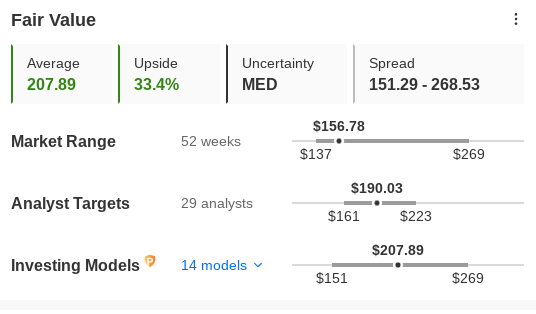Street Calls of the Week
- The SPDR S&P Retail ETF has lost almost 35% of its value this year
- Macro conditions indicate it could be a while before the sector fully recovers from this slump
- Still, Target’s challenges won’t affect its solid long-term plans
The unexpected shift in spending habits after the pandemic-fueled buying spree has raised several red flags for the U.S. retail sector, such as tighter margins, piling inventories, and lower sales projections.
As a consequence, the SPDR S&P Retail ETF (NYSE:XRT) has lost almost 35% of its value this year, more than the 24% decline on the benchmark S&P 500. And with the Fed’s interest rate cycle, stubbornly high inflation, and increasing recession risks, retailers may take much longer to recover from this slump.
Jeff Gennette, the CEO of Macy’s (NYSE:M), said in August customers across income levels are pulling back on purchases. Days later, Dollar General (NYSE:DG) executives said people are trading down to less expensive versions of everyday items, such as powdered detergents, and putting more purchases on credit cards.
But there are exceptions amid the battered sector. And among those exceptions, I recommend buying Target Corporation (NYSE:TGT), which has lost about a third of its value this year. Shares of the Minneapolis, Minnesota-based discount department store traded on Wednesday at $155.74.
Target is struggling more than its peers because it is more exposed to discretionary items, such as clothing, home furnishings, and electronics, which customers are buying less after the pandemic.
The company stocked up on these categories, anticipating customers would continue to spend on these items even after the pandemic, but that didn’t happen, leaving the chain with excess inventory, which it’s heavily discounting to clear space.
That was the right strategy, but it took a hefty toll on earnings. While same-store sales rose 2.6% in the three months to July 30, net earnings were down 90% compared with the same period a year ago. The operating margin slumped to 1.2% from 9.8%.
But Will Target Be Stuck In This Situation For Long?
I don’t think so. There are already signs that the company is successfully navigating these short-term challenges, and the worst is behind it. That’s why many valuation models by InvestingPro predict a big upside potential for TGT stock.

Source: InvestingPro
The physical space occupied by inventory in distribution centers has fallen 20% since June, and cost pressures are easing with the recent decline in oil prices. In addition, the mix of products in the inventory has been shifting toward essential goods, with a low risk of markdowns. According to Chief Executive Officer Brian Cornell:
“The vast majority of the financial impact of these inventory actions is now behind us. We’re positioned to deliver a strong improvement in our profitability this fall.”
There is no doubt that Target has suddenly found itself in a different operating environment than it experienced during the pandemic. But this short-term challenge doesn’t mean the retailer has lost its investment appeal for long-term investors. After a more than 30% pullback, Target’s stock now looks cheap with just 12 times forward earnings and a dividend yield of around 3%.
When picking a long-term winner, the biggest concern is whether the company can produce strong cash flows in good and bad times. Target has an excellent track record on this front.
The company has steadily increased its dividend every year for the last 50 years, covering crises such as the dot-com collapse of the early 2000s, the financial crash of 2008-2009, and the COVID-19 pandemic.
Bottom Line
Target, in my opinion, remains one of the best retail stocks to own due to its solid income potential and ability to rebound quickly. After a troubled 2022 when it faced supply chain issues, higher inflation, and the pandemic-related demand spike, the retailer is well-positioned to regain its lost ground, making it a safe bet in this bear market.
Disclosure: At the time of writing, the author doesn’t own any shares mentioned in this report. The views expressed in this article are solely the author’s opinion and should not be taken as investment advice.
